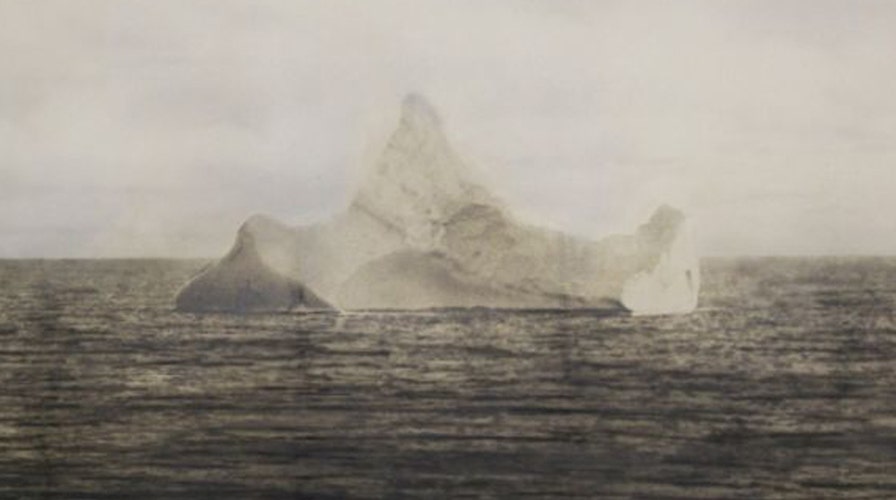A glimpse of Titanic history
Four4Four Science: ‘Titanic iceberg’ photo; doctors’ hologram house calls, canine DNA, insect naming rights
It was famously described as unsinkable, but in April 1912 the mighty Titanic struck an iceberg and disappeared beneath the frigid waters of the North Atlantic.
It was many decades until it would be discovered in 1985, and even longer before we knew the true story behind what led to its discovery.
Filmmaker James Cameron’s epic Titanic blockbuster was released 20 years ago this year, but at the time it was scarcely known that RMS Titanic’s discovery was largely the result of a secret Cold War military expedition.
Details of the story had trickled out, but it wasn’t until the past decade that the United States navy became comfortable to reveal the finer details of the search, according to Robert Ballard, the oceanographer who discovered RMS Titanic.
He met with the navy in 1982 to request funding to develop the robotic submersible technology he needed to find the sunken vessel, National Geographic reported.
The navy was interested in the technology, but only because it wanted to investigate the wreckage of two sunken nuclear submarines, the USS Thresher and USS Scorpion.
They too were resting at the bottom of the North Atlantic and the US military wanted to know the fate of the nuclear reactors that powered the ships.
The mission was to help determine the environmental safety of disposing of additional nuclear materials in the ocean, and the US also wanted to investigate the theory the vessels were brought down at the hands of the soviets.
At the time, the UN navy commander said once the Thresher and Scorpion mission was complete, if there was time, Mr Ballard could do what he wanted with the sonar technology. In the end, with just 12 days left he set out to use the new tech to find the Titanic, and ultimately made the breakthrough by effectively following a theory he developed looking for the nuclear subs about a trail of debris potentially left behind by the famous ship.
“The navy never expected me to find the Titanic, and so when that happened, they got really nervous because of the publicity,” Mr Ballard said.
“But people were so focused on the legend of the Titanic they never connected the dots.”
WHY WAS IT SO HARD TO FIND?
The large ship continued to drift after it made its distress call, meaning there was a huge expanse of ocean, spanning hundreds of kilometres, which could potentially have been home to the Titanic’s watery grave.
Nonetheless, no shortage of would-be treasure hunters tried to track it down. They proposed using everything from electromagnets to nylon balloons to raise it from the depths — that is, if they ever located it.
Plenty of search parties set sail but they invariably came back empty-handed and the infamous prize remained undiscovered for over seven decades until Mr Ballard and an international team tracked it down using the sonar technology and undersea robots.
WHAT THE FILM GOT WRONG
In a new one-hour documentary, James Cameron goes back to the sinking of the Titanic to see what he got wrong in the film.
When he set out to make the original film — which remains one of the highest grossing movies of all time — he promised a “living history,” saying he owed the truth to those souls lost in 1912.
He takes a particularly scientific approach to filmmaking and with new data, comes revision.
“I was happy to continue with some of the forensic stuff we had never really resolved,” he said. “So we decided that the framework of the documentary would be, ‘What did we get right and what did we get wrong?’”
The new doco draws from 33 dives to the wreck and years of forensic analysis to explore the myths and mysteries of the sinking.
The film recreates the disaster (albeit on a much smaller scale), conducting mini tests in hopes of answering questions that Cameron said have troubled him for decades.
While it debuts this weekend in the US, the documentary will air for Australian viewers on National Geographic on Sunday, December 17 at 8.30pm AEDT.
This story originally appeared in news.com.au.

